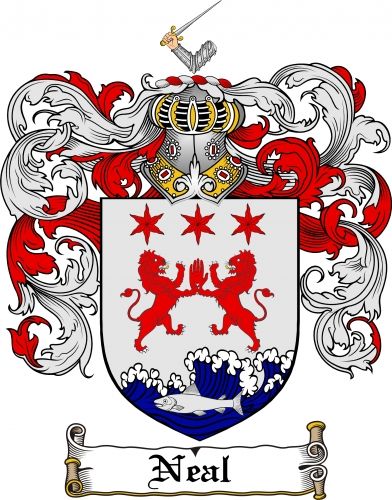Daisy's Relatives and Ancestors
Where possible, information is derived from or verified with official sources, including census returns, birth, marriage and death certificates, parish records etc. Some of the information in this section has been derived from research undertaken in the late 1960s by the Canadian folk singer/songwriter Vera Johnson, one of Daisy's second cousins, and other family members. Due to the passage of time verification of some of this information has not been possible and it has been included, where appropriate, in good faith.
Research has been made more difficult by inconsistencies in the spelling of names, particularly the surname 'Neal' which in earlier instances is spelt 'Neale'. Crathorn is also spelt in different ways including Craythorne, Craythorn, Crathorne and Crathorn. Illiteracy is one of the main reasons for the various spellings. Although a person would know how their name sounds when spoken, if they cannot read or write they do not know how it is spelt. It would therefore be down to the particular official, whether registrar or census enumerator, to write down the name as they thought it should be spelt.
About the censuses
Census returns are subject to a hundred-year non-disclosure rule. Copies of census returns are available for public inspection for the years 1841, 1851, 1861, 1871, 1881, 1891, 1901 and 1911.
The censuses were held on the following dates:
- 1841 - 06 June
- 1851 - 30 March
- 1861 - 07 April
- 1871 - 02 April
- 1881 - 03 April
- 1891 - 05 April
- 1901 - 31 March
- 1911 - 02 April
The administration of early census returns from 1801 to 1831 was the responsibility of the Overseers of the Poor and the clergy. The information in these early censuses was used to determine population size, the occupations of the population and the condition of the housing stock. These returns were used as statistical tools.
After 1841 the administration of censuses became the undertaking of the Registrar General and the Superintendant Registrars, who were responsible for the registration of births, marriages and deaths.
In order to minimise the risk of omissions or counting people twice, it was necessary to ensure that everyone completed their census return on the same day. In order to properly manage the administration, the country was divided up into enumeration districts, based mostly on existing parishes. Larger parishes were subdivided further, and each area was allocated to a census enumerator.
Each household was supplied with a pre-printed census schedule by the census enumerators (often schoolmasters) before the predetermined census date.
Householders were instructed to complete their individual household schedules, listing the names of those who had been in their household over the period between Sunday night and Monday morning. The census enumerators then collected the household schedules the morning after the census night.
If the schedules had not been properly completed, the enumerator was supposed to ask for extra details at the doorstep, although it is clear that this was not done uniformly. If the householder was unable to fill in the schedule, perhaps because he or she was illiterate, the census enumerator was to fill it in for them. This means that the enumerator had to rely on transcribing spoken words, which will have resulted in some miss-spelling of names.
These individual household schedules - which, with the exception of the 1911 census, have since been destroyed - were then transcribed into the census enumerators' books, together with statistical information, and it is from these books that copies of the census returns can be obtained. The 1911 census is different in that the actual household schedules as completed by the homeowner are available for inspection.
With the exception of the 1841 census, the age shown is the age recorded by the enumerator. In the case of the 1841 census, the age for anyone aged 15 or over was rounded down to the nearest 5 years. e.g. an entry of 15 means aged from 15 to 19; an entry of 20 means aged from 20 to 24, etc.
Origins of Surname 'Neal'
English, Scottish, and Irish: from an Anglo-Scandinavian form of the Gaelic name Niall (see Neill). This was adopted by the Scandinavians in the form Njal and was introduced into northern England and East Anglia by them, rather than being taken directly from Gaelic. It was reinforced after the Norman Conquest by the Anglo-Norman French and Middle English forms Neel, Nihel, and Nigel, which were brought to England by the Normans. Scottish and Irish: reduced form of McNeal (see McNeil).
Neal Family Crest

Neal Family Motto
Motto: Nomen extendere factis Motto translation: The name matches the deed